Our coach is a man who has encountered several personal stumbling blocks, but Despite his own challenges, week after week you will find him at the Randburg Harriers track, coaching athletes to achieve their personal goals. He is always there, smiling and willing to pass on his expertise and lend a helping hand. This is a story written by a group of Dave’s athletes as a thank you to someone who they hold dear and who they refer to as ‘Our Humble Coach’.
Most of us run for the pure love and joy that running brings, but most of us, from average to elite runners, also want to improve our running times and overall fitness. We all read up on training programmes, get advice from running friends and search the internet for any running-related information, but we don’t always improve the way we would like to. Finding a coach can make a huge difference, but many times runners find a coach, then the relationship fizzles out after a while for several reasons, like we feel too pressurised, we don’t ‘gel’ with the coach, or the training methods just don’t suit us.
FINDING THAT SPECIAL ONE
Sometimes we are lucky enough to find one special person who crosses our paths and who brings out something special in us. That one special person who takes our running ability from zero to hero! Dave Coetzee is one such man. He has made a difference to the lives and running abilities of each and every one he has coached. Dave is now entering his ninth year as official coach to Randburg Harriers and his endless passion, dedication and commitment to his athletes is always prevalent, never expecting anything in return.
When one sees Dave on the track with his athletes, always smiling and never grumpy, you would never guess that this is a man that has had to overcome some serious personal stumbling blocks. Yet despite his circumstances, he coaches his athletes to achieve their personal goals irrespective of who they are; school athletes, track runners, cross-country runners, ultra-marathoners or those who just want to keep fit.
All his novice Comrades runners have managed to get a finisher’s medal. Some more experienced have been helped to Comrades silvers or achieved Gauteng colours in cross-country and track. At the annual 2009 Harriers Club Awards event, 90% of the awards were taken by Dave’s athletes! That was already a remarkable achievement, but to add to that, Dave’s 2010 track team have achieved stunning results so far in all disciplines and there is more to come before the year is out.
A REMARKABLE ATHLETE HIMSELF
Dave is a Libra, born in the same year that Neil Armstrong took his giant step for mankind! He is married with two lovely daughters. As a youngster he proved his running talent on the school circuit, where he achieved Transvaal colours for cross-country in 1985 and school full colours for athletics and cross-country. He also won two inter-school titles in the 1500m. Three of Dave’s school records still stand today, including the fastest times for juniors and seniors cross-country route. He continued running as a student and got a fourth place in the steeplechase at the SA Technicon Champs.
Dave has competed in cross-country, veterans’ athletics and duathlon, and 2001 was his golden year as he achieved Gauteng colours in both duathlon and track, achieving good results at the SA Champs in both disciplines.
THANK YOU! THANK YOU! THANK YOU!
This humble coach sacrifices much of his personal time for his athletes, always checking up to see where they are at, both mentally and physically. He deserves a medal and tribute for his efforts, and for this we are grateful. Were it not for him, many of us wouldn’t have achieved our goals. It is hard to thank Dave in words, but a couple of us tried in the following sentences.
Charlene Botes
I started training with Dave in June 2009, with the aim to run Comrades 2010. Bearing in mind that the furthest I’d ever run before was 21km. I didn’t just finish Comrades in a time of 9:53, but also improved on all my former PBs along the way. I really wouldn’t have been able to do this without Dave’s help, support and constant motivation. He selflessly gives up his time and all he wants in return is to see us accomplish our goals. Dave is very passionate about running and it really shows in his coaching methods.
Michelle Mee
I started track training with Dave in August 2009. My goal was to run a sub-8-hour Comrades Marathon – my previous best was 8:48. This year I ran 7:48, improving my PB by 1 hour! En route to my Comrades PB, I also improved my marathon time by 10 minutes. Dave’s extensive coaching expertise and knowledge is the common denominator in all my running achievements in the past year. I have found my passion for running again, without the pressure. Dave has this great ability to bring out the best in you and your running without putting pressure on you. This gives you the freedom to go out there and get the results you want. Dave gives freely of his personal time, he has track sessions every Monday and Wednesday, and in addition he also sacrificed many early Saturday morning sessions to keep us ‘on track’ during Comrades training.
Paula Quinsee
My goal when I first started training with Dave was to run the Comrades Marathon, only once of course, and only to say: “I have been there, done that, got the T-Shirt.” Five years later and I am still training with Dave. I have run four Comrades Marathons, four Two Oceans Marathons and numerous other races in between. This is mainly due to Dave, who subtly coerced me into goals I never thought I was capable of – at the 2009 Comrades I got a silver medal, finishing in 7:23 and was 13th lady; at the 2010 Two Oceans I finished in 4:12 and was 15th lady. I owe a lot to Dave for helping me achieve what many will talk about but never attempt. I have realised that with the right person behind you, you can achieve anything you want!
Adam Martin
I joined Dave’s group around May/June this year. I have several goals on my list, the current ones being a silver Two Oceans and a men’s silver at The RAC Tough One! The journey so far has been incredibly positive, netting my most recent 10km PB (33:43). Dave takes a personal interest in each of his athletes and adds that human touch, like checking up on you before a race or checking up just after a race to see how it went. I enjoy the intense nature of his sessions, where you feel as though you really have worked hard, but more notably, I have never seen a coach take such glee from “particular” sessions which are definitely not for the faint hearted and are there to make you strong (mentally and physically!)
Danica Dannhauser
I moved to Johannesburg from Pietermaritzburg in April 2009. I love running but was scared to join a club in Johannesburg. My dad told me about Randburg Harriers and how outstanding the club and coaching was. I have always wanted to run Comrades, so I started training with Dave on 1 July 2009, battling initially and wanting to give up as it was so much hard work. Dave made it easier. He is patient and doesn’t push an athlete from the start, but if he sees talent in someone, he tries very hard to coax that runner to achieve their best and ultimately their goal. It took me three months to start seeing an improvement. Running just got easier and much more fun.
Training with Dave taught me how to pace myself and be consistent. As a result I achieved a 21km time of 1:32 and finished the Ultimate Human Race in 9:53. I am very pleased with myself and only have Dave to thank for this. He gives his everything and there is not one day when he is not at the track, or checking up on you after a race to find out how it went and giving his athletes credit and recognition. No one gets treated differently.
Dave made me realise that having big dreams and goals are possible and to never give up, but to push through to the end. His influence on my life is immeasurable and the skills and lessons he has taught me will be amplified over and over in my lifetime. He has given me wisdom and confidence. He has been an inspiration on and off the field. Thanks Dave, for all the time and effort that you have put into coaching our team this year!
Eric Wiebols
I joined Dave’s group in February last year. Having run all my life, I thought I was quite experienced. However, Dave has brought a whole new dimension to my running and helped me to reach goals I didn’t think possible. As a result I have since run two Comrades Marathons, achieving a silver medal on my second one and improving my Two Oceans PB by almost an hour. I have also improved my PBs over all other distances and have Dave to thank for this.


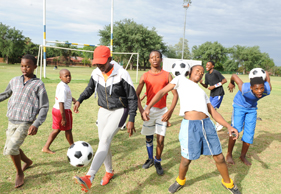
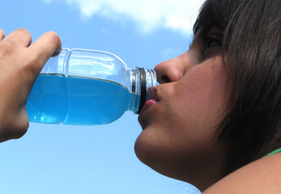
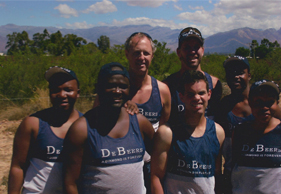
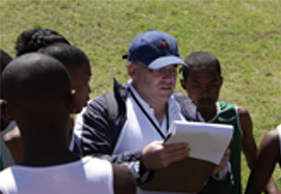
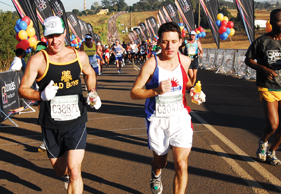
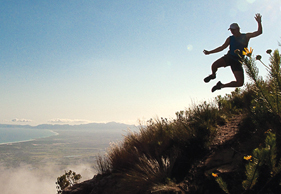
 Trail running is fun and definitely something everyone should try!
Trail running is fun and definitely something everyone should try!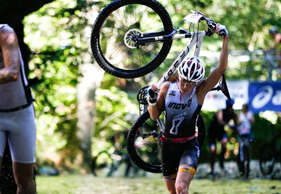

 Asana 1: Paschimottanasana (Forward Bend)
Asana 1: Paschimottanasana (Forward Bend)
 Asana 2: Janu Sirsasana (Head to Knee Pose)
Asana 2: Janu Sirsasana (Head to Knee Pose)
 Asana 3: Marichyasana (Great Sage Pose)
Asana 3: Marichyasana (Great Sage Pose)
 Asana 4: Baddha Konasana/Badrasana (Butterfly Pose/Cobbler Pose)
Asana 4: Baddha Konasana/Badrasana (Butterfly Pose/Cobbler Pose)
 Asana 5: Supta Virasana (Reclining Hero Pose)
Asana 5: Supta Virasana (Reclining Hero Pose)
 Simon Magakwe (24)
Simon Magakwe (24) LJ Van Zyl (25)
LJ Van Zyl (25) Mbulaeni Mulaudzi (30)
Mbulaeni Mulaudzi (30) Caster Semenya (19)
Caster Semenya (19) Khotso Mokoena (25)
Khotso Mokoena (25) Tumelo Thagane (26)
Tumelo Thagane (26) Cheyne Rahme (19)
Cheyne Rahme (19) Sunette Viljoen (27)
Sunette Viljoen (27) Justine Robbeson (25)
Justine Robbeson (25) Elizna Naud? (32)
Elizna Naud? (32) Chris Harmse (37)
Chris Harmse (37)